Are you looking for the perfect watercolor product for your artwork?
With so many options available, it can be overwhelming to choose the right one. I’ve tested various watercolor products—from tubes to pans, sticks, and even brush markers.
In this guide, I’ll share my personal experience with each type, their pros and cons, and how to test for water resistance.
Contents
- 1 Exploring Different Types of Watercolor Products
- 1.1 Watercolor Tube: Versatile and Economical
- 1.2 Watercolor Pans: Compact and Portable
- 1.3 Watercolor Sticks: Flexible for Drawing and Painting
- 1.4 Watercolor Crayons: A Blend of Wax and Watercolor
- 1.5 Watercolor Pencils: Precision with a Painterly Effect
- 1.6 Watercolor Sheets: Ultra-Portable and Space-Saving
- 1.7 Watercolor Brush Pens & Markers: Convenient for Quick Sketching
- 1.8 Liquid Watercolor: Intense Pigments in a Fluid Form
- 2 Compare Different Brands and Their Water Resistance Properties
- 3 How to Choose the Right Watercolor Product
- 4 In A Nutshell
Exploring Different Types of Watercolor Products
Watercolor comes in many forms, each with unique characteristics. Some are more portable, while others provide intense pigmentation.
Below, I’ll walk you through the different types, how they work, and their advantages and disadvantages.
Watercolor Tube: Versatile and Economical
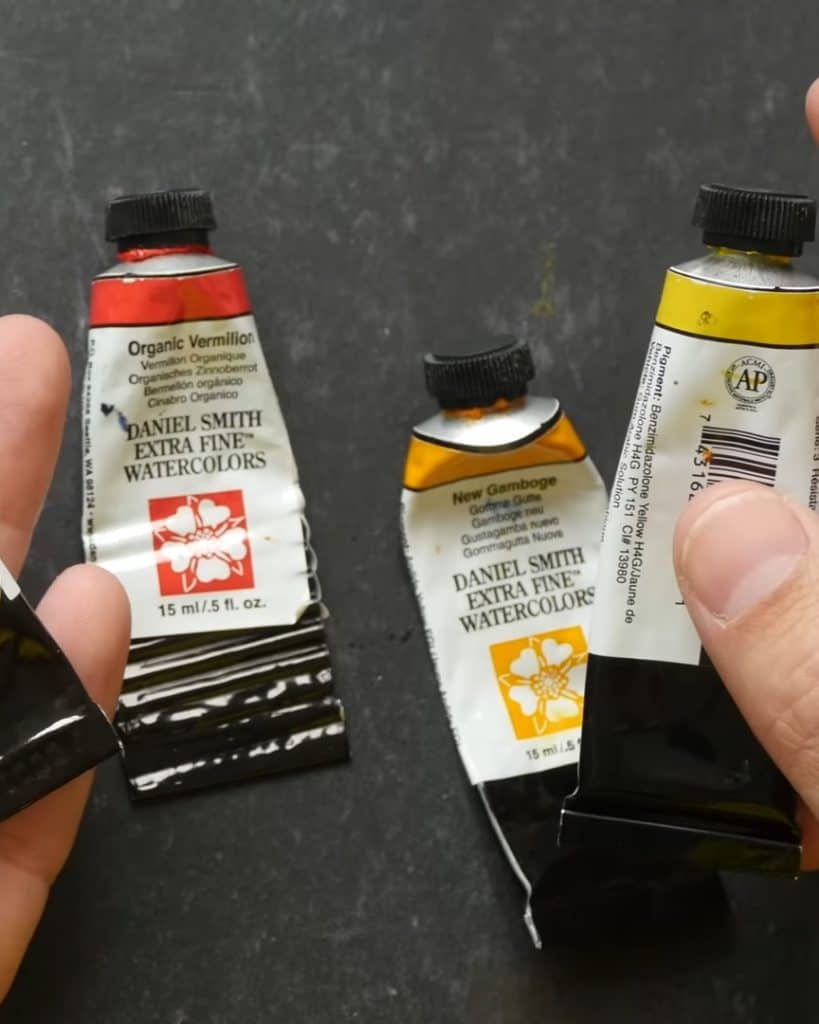
Watercolor tubes are one of the most common forms of watercolor paint.
They come in different sizes—5 ml, 7 ml, 12 ml, 15 ml, or even larger.
Many artists, including me, prefer tubes because they offer fresh, vibrant paint that is easy to mix.
Pros of Watercolor Tubes
- Versatile Application: You can use them straight from the tube or squeeze them into pans for portability.
- More Economical: A 15ml tube can refill a half-pan about seven times, making it a cost-effective option.
- Fresh and Long-Lasting: Keeping paint in tubes prevents contamination and drying out, ensuring fresh pigment every time.
Cons of Watercolor Tubes
- Potential Waste: If you squeeze out too much, you need a way to store the excess or risk wasting paint.
- Less Portable: While you can take tubes outdoors, carrying multiple tubes can be inconvenient compared to a compact pan set.
Tips for Using Watercolor Tubes

I personally use watercolor tubes for both studio and outdoor painting.
At home, I squeeze them into a plastic palette for immediate use. When I need a portable setup, I store dried tube paint in pans.
However, some colors dry harder than others, making them tricky to re-wet. So, I always test a small amount before filling an entire pan.
Watercolor Pans: Compact and Portable
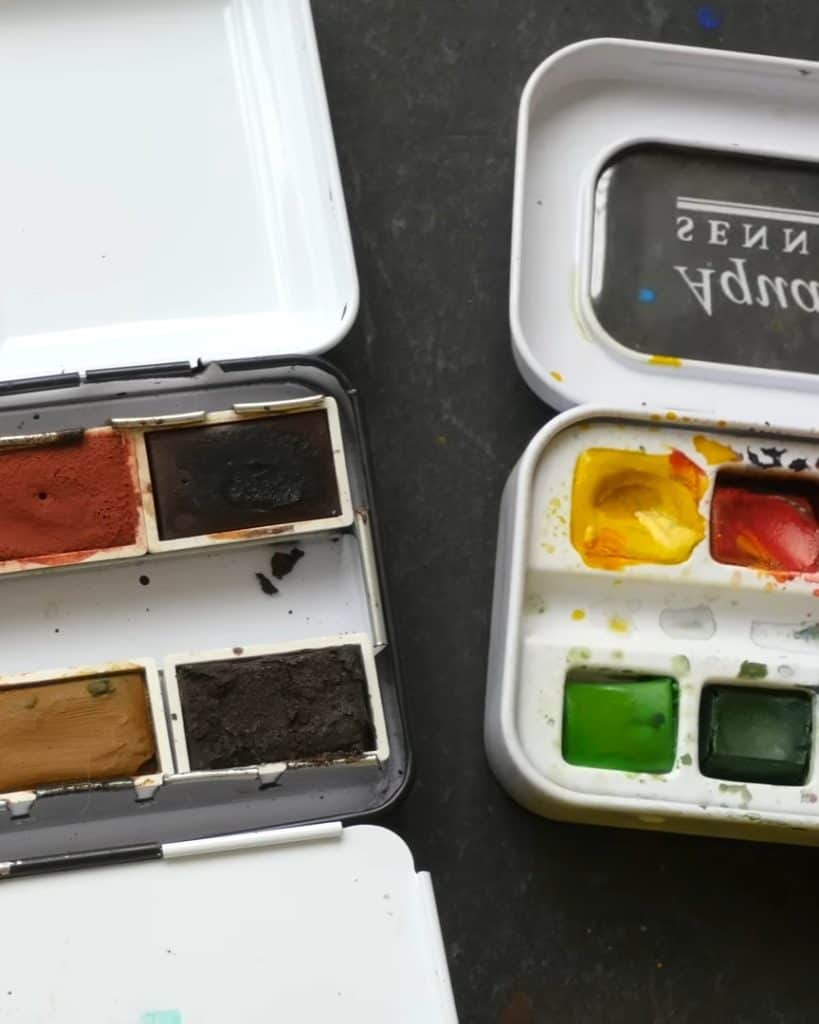
Watercolor pans are another popular choice, especially for artists who love to paint on the go.
They come in two sizes: half pans and full pans. A pan set usually comes in a box with a built-in mixing area.
Pros of Watercolor Pans
- Highly Portable: Everything is neatly stored in a compact box, making it easy to carry.
- No Wasted Paint: Unlike tubes, pans let you control the amount of water and paint used without squeezing out excess.
- Long Shelf Life: If stored properly, watercolor pans can last for years without drying out completely.
Cons of Watercolor Pans
- Can Become Brittle: If you don’t use them often, some colors may dry out, crack, or break into tiny pieces.
- Limited for Large Paintings: Since pans hold small amounts of paint, they are less convenient for covering large areas.
Tips for Using Watercolor Pans
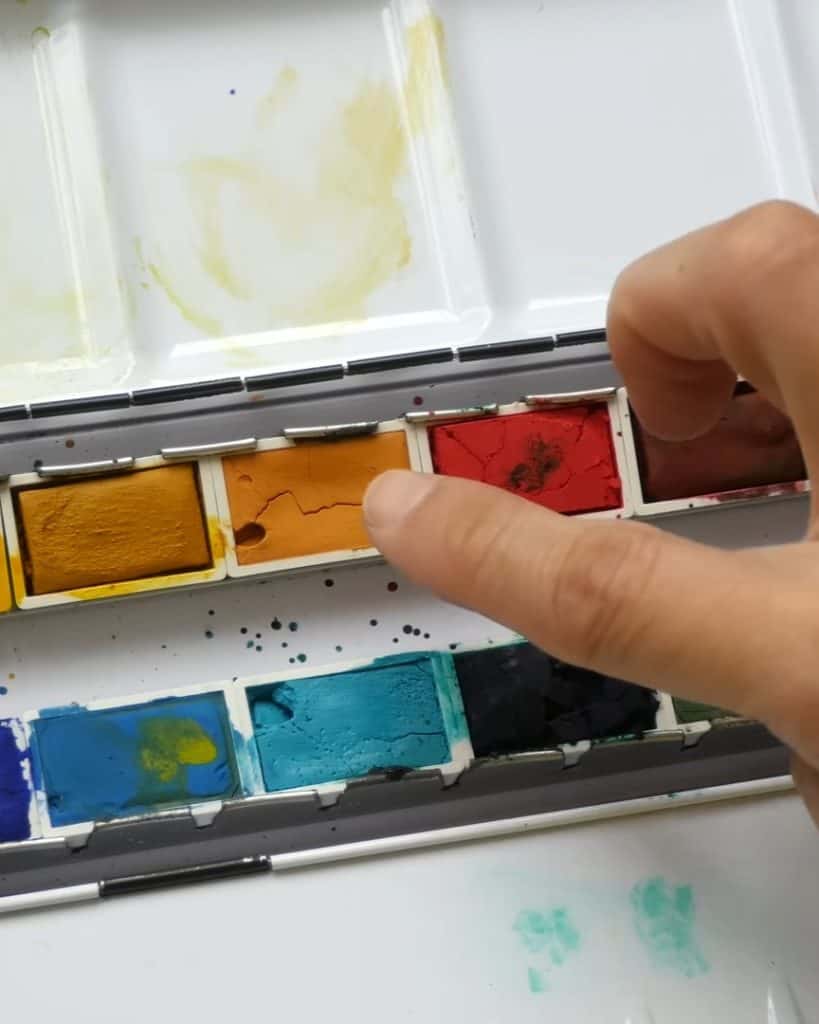
When I use pans, I make sure to use them regularly to prevent drying and cracking.
If I’m working on a large painting, I prefer tubes because half-pans don’t hold enough pigment for big washes.
Also, I always check if the mixing areas in my pan set are sufficient. Some boxes offer very limited mixing space, which can be frustrating.
Watercolor Sticks: Flexible for Drawing and Painting
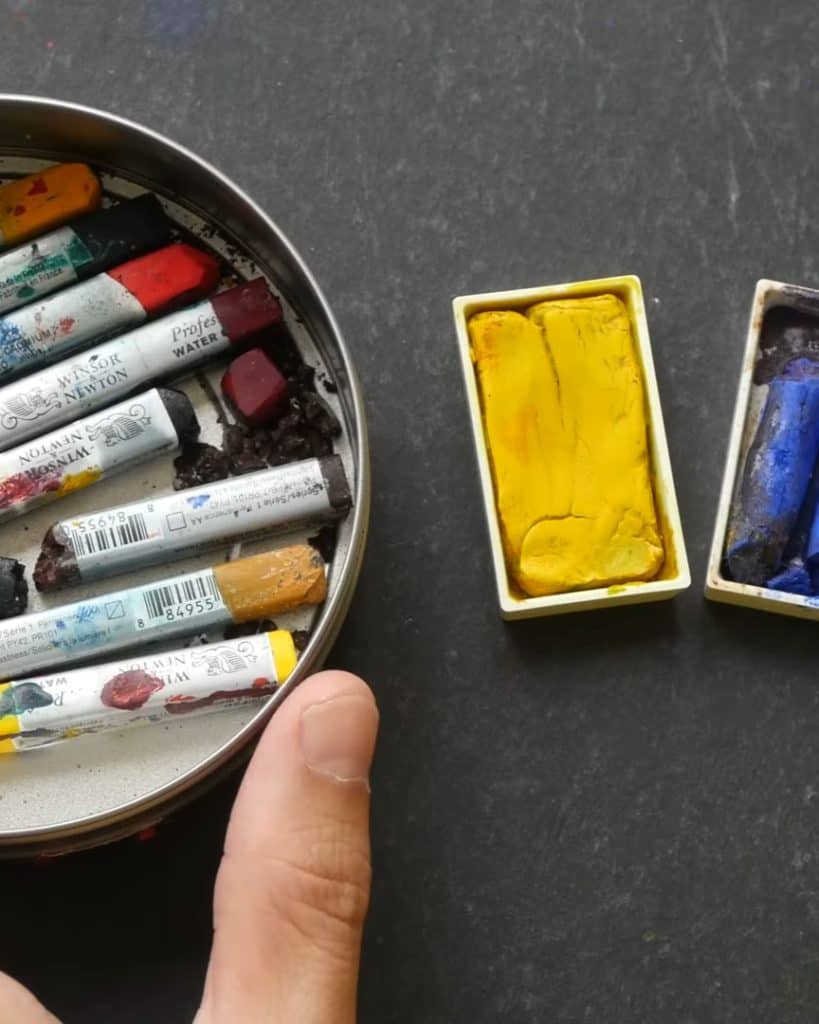
Watercolor sticks are a fun alternative for artists who like both drawing and painting. These sticks can be used dry, like colored pencils, or wet, like traditional watercolor.
Pros of Watercolor Sticks
- Dual Usage: You can use them dry like a crayon or add water for a traditional watercolor effect.
- Highly Pigmented: They contain concentrated pigment, making them great for vibrant washes.
- Portable and Convenient: No need for a palette; just draw and activate with water.
Cons of Watercolor Sticks
- Prone to Breaking: Some sticks can dry out and crumble over time.
- Sticky or Gooey Issues: Some brands, like Daniel Smith, may become soft if the binder escapes, making them harder to use.
Tips for Using Watercolor Sticks
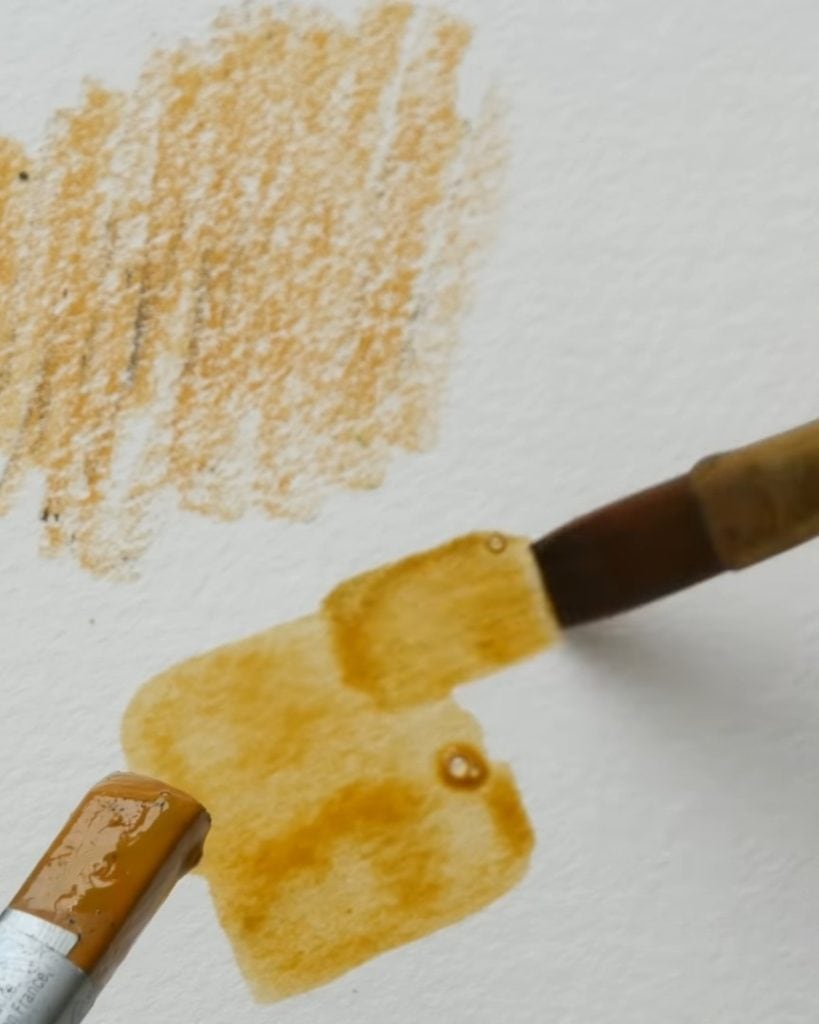
I’ve tested sticks from different brands. Some are cylindrical, while others are rectangular.
I even had a few that became so sticky that I had to break them up and store them in pans.
If you plan to use watercolor sticks, test them first to see how they react over time.
Some colors may harden over time, while others stay soft. Storing them in a pan can help keep them organized.
Watercolor Crayons: A Blend of Wax and Watercolor
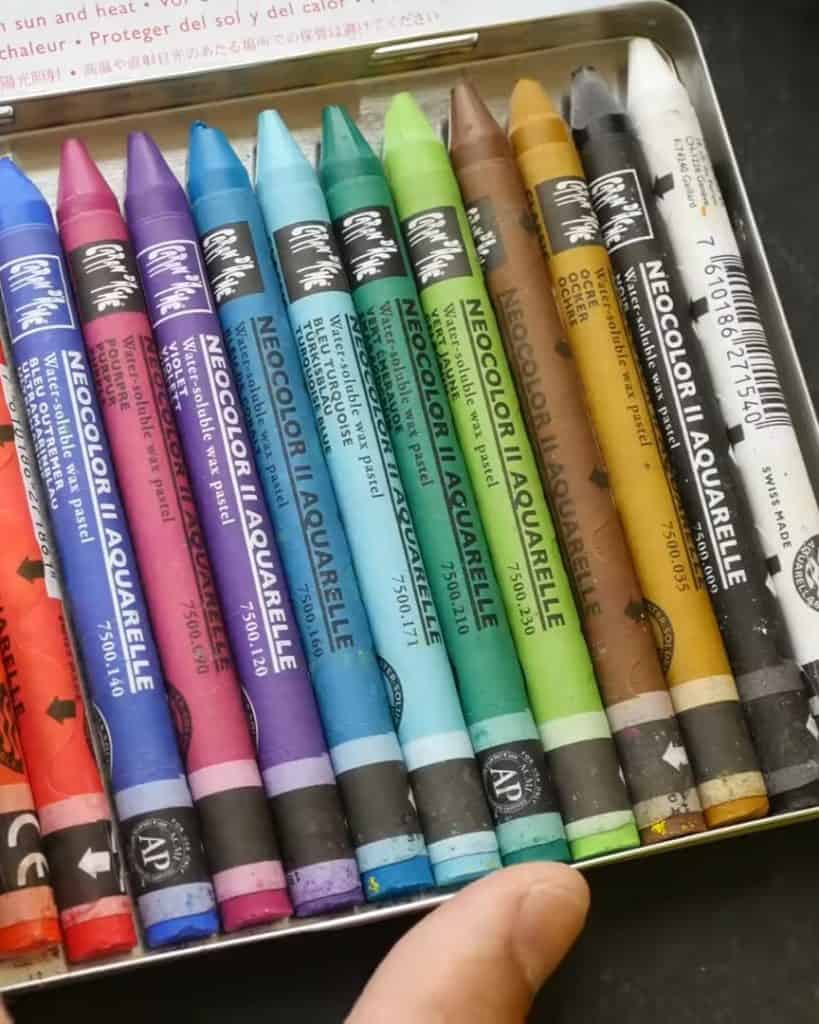
Watercolor crayons, such as the Neocolor series, work similarly to watercolor sticks but have a waxy texture.
Pros of Watercolor Crayons
- Water-soluble and Easy to Blend: The colors dissolve beautifully when mixed with water.
- Great for Textured Paper: The wax-based formula creates a unique texture when used on rough surfaces.
- Available in Wide Color Ranges: Some brands offer over 100 shades.
Cons of Watercolor Crayons
- Not Always Water-Resistant: Some crayons dissolve too easily when exposed to moisture.
- Heat Sensitivity: High temperatures can make them soft and challenging to handle.
Tips for Using Watercolor Crayons

To achieve the best results, apply them lightly on textured paper and activate them gradually with a wet brush.
I’ve tested Neocolor II crayons by wetting the tips and applying them directly to the paper. The colors dissolve beautifully and create a vibrant, painterly effect.
However, exposure to heat can make them sticky, so proper storage is essential.
Watercolor Pencils: Precision with a Painterly Effect
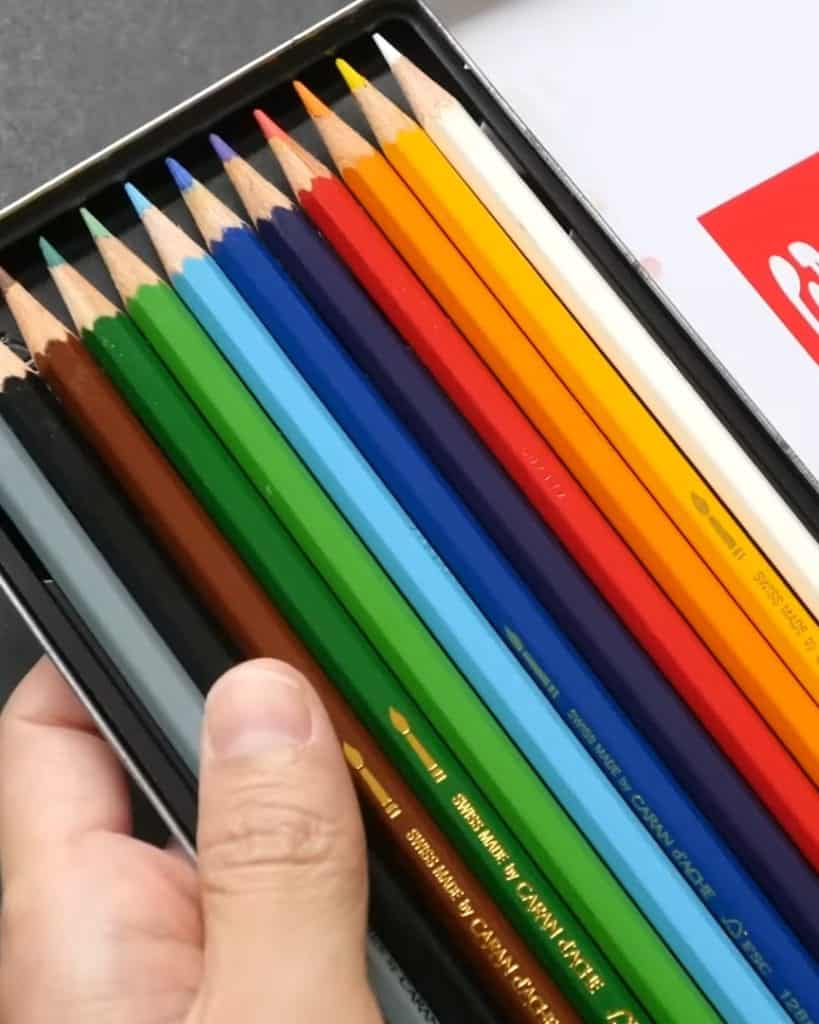
Watercolor pencils are great for adding fine details while maintaining a watercolor effect.
Different brands perform differently, so always test before using them in a final piece.
Pros of Watercolor Pencils
- Easy to Control: Great for fine details and delicate shading.
- No Mess: Unlike liquid or pan watercolors, they don’t require a palette.
- Blendable: You can layer and mix colors before adding water.
Cons of Watercolor Pencils
- Less Vibrant Than Paint: The pigment may not be as intense as liquid watercolors.
- Some Pencils Don’t Dissolve Easily: Certain brands take more effort to blend smoothly.
Tips for Using Watercolor Pencils

Experiment with different brands to see which dissolves best. Some, like Derwent Inktense, are more vibrant but may not be fully lightfast.
Watercolor Sheets: Ultra-Portable and Space-Saving
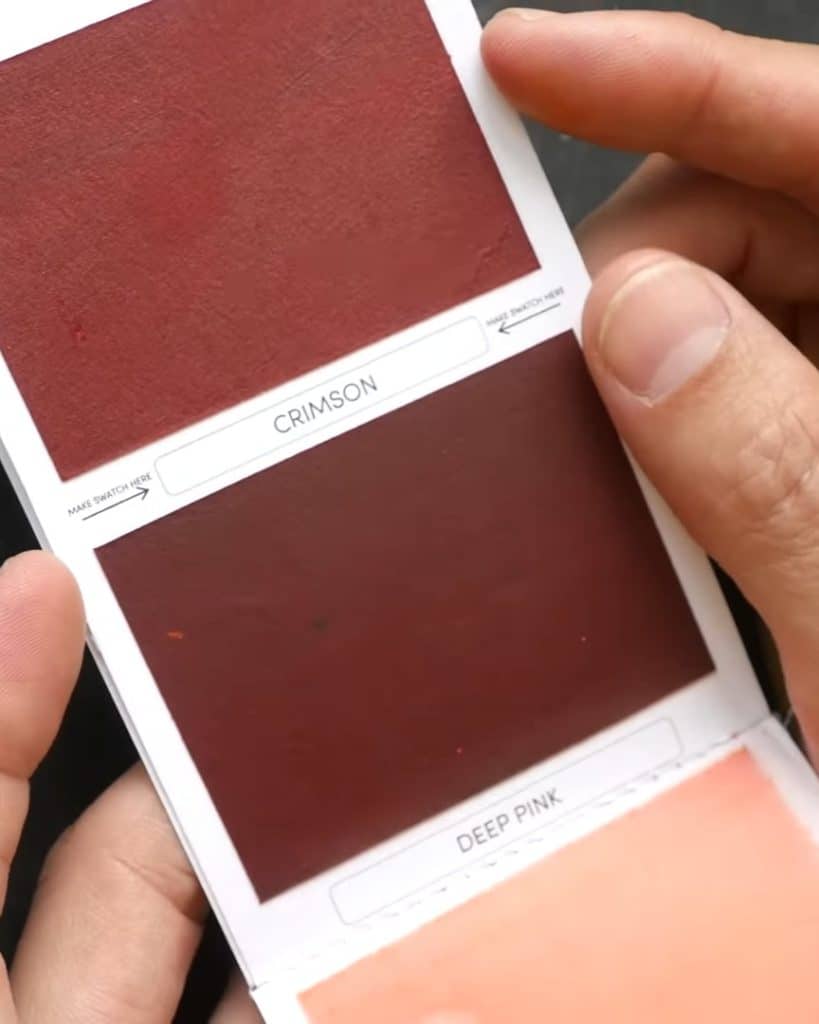
Watercolor sheets, like the Viviva Color Sheets, are dye-based inks dried onto paper. You simply wet your brush and pick up the pigment.
Pros of Watercolor Sheets:
- Super lightweight and compact: Ideal for traveling.
- Highly vibrant colors: The dye-based inks are intense.
Cons of Watercolor Sheets:
- Not lightfast: Colors can fade over time.
- Hard to tell colors before swatching: Some colors look very different when activated.
Tips for Using Watercolor Sheets:

These sheets are fun to use, but because they’re dye-based, they might not be the best choice for long-lasting artwork. I always test them on scrap paper before starting a painting.
Besides, the color you see on the sheet doesn’t always match the actual paint color.
For example, Viridian green may look magenta on the sheet, which can be confusing. That’s why I always swatch my colors before painting to avoid surprises.
Watercolor Brush Pens & Markers: Convenient for Quick Sketching

Brush pens and markers contain liquid watercolor or dye-based ink. Some brands, like Winsor & Newton, use pigments, while others, like Kuretake, use dyes.
Pros of Watercolor Brush Pens & Markers:
- Easy to use and portable: No need for palettes or brushes.
- Suitable for sketching and layering: Some brands are water-resistant when dry.
Cons of Watercolor Brush Pens & Markers:
- Not all are lightfast: Some fade over time.
- Less control over washes: Harder to create soft transitions.
Tips for Using Watercolor Brush Pens & Markers:
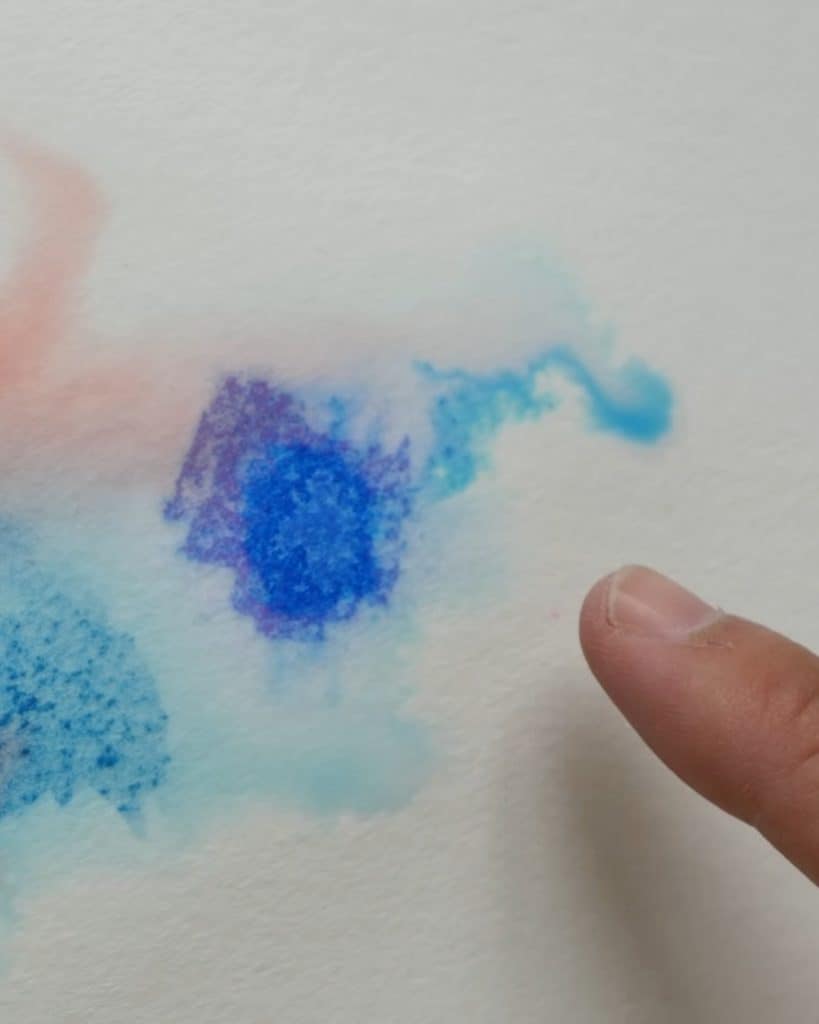
When testing these, I noticed that some markers reactivated with water while others didn’t. It’s always a good idea to check before using them in a final piece.
Liquid Watercolor: Intense Pigments in a Fluid Form

Liquid watercolor comes in bottles and is highly concentrated. Brands like Dr. Ph. Martin’s use pigments, while Ecoline watercolors are dye-based.
Pros of Liquid Watercolor:
- Rich, vibrant colors: More intense than traditional watercolors.
- Excellent for smooth washes and blending: Easily spreads on wet paper.
Cons of Liquid Watercolor:
- Needs shaking before use: Pigments settle at the bottom.
- Not all are water-resistant: Some reactivate when re-wet.
Tips for Using Liquid Watercolor:

I love the bold look of liquid watercolor, but I always check if they’re water-resistant or not.
Some brands, like Ecoline, tend to be more water-soluble when dry, which affects layering.
Compare Different Brands and Their Water Resistance Properties
Not all watercolors are water-resistant when dry. Some re-wet easily, while others become permanent. Here’s how different brands perform:
Dr. Ph. Martin’s Hydrus
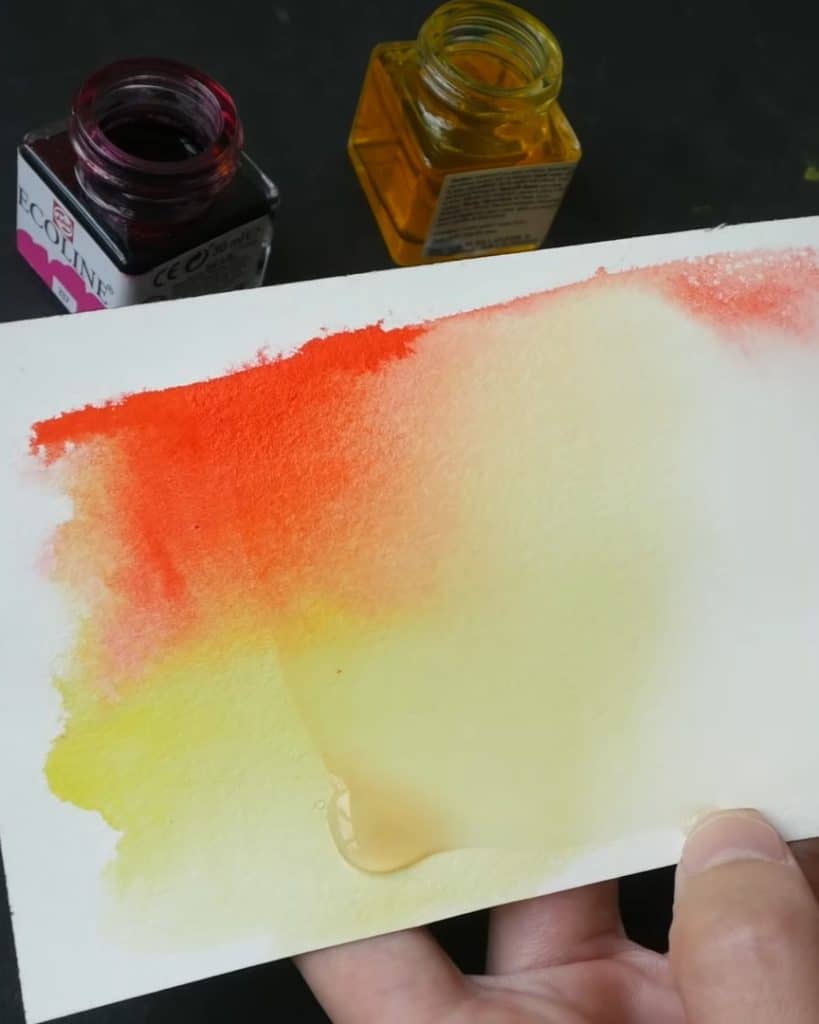
Dr. Ph. Martin’s Hydrus is a pigment-based liquid watercolor known for its strong water resistance once dry.
Unlike traditional watercolors, it does not lift or reactivate with water, making it ideal for layering.
However, this also means blending after it dries is nearly impossible, so mistakes are more challenging to fix.
Ecoline Liquid Watercolor

Ecoline Liquid Watercolor is dye-based and completely water-soluble.
Even after drying, it can be easily reactivated, which makes blending effortless but layering difficult.
Because it’s dye-based, it also fades faster over time.
Winsor & Newton Watercolor Markers

These markers contain pigment-based watercolor that is somewhat water-resistant when dry but not fully permanent.
They work best on wet paper for smooth blending but can be harder to manipulate on dry surfaces.
Viviva Color Sheets

Viviva Color Sheets are highly pigmented, dye-based watercolors that dissolve instantly with water.
They remain fully water-soluble even after drying, making them prone to smudging if rewet.
Kuretake Watercolor Brush Pens

The Kuretake watercolor brush pens are water-soluble and not water-resistant.
When sprayed with water, the colors easily reactivate and spread, making them great for blending but not ideal for layering or preserving fine details.
If you need a more permanent option, consider pigment-based markers instead.
How to Choose the Right Watercolor Product

When picking a watercolor product, consider:
- Portability: Pans and color sheets are best for travel.
- Color Intensity: Tubes and liquid watercolors offer the most vibrancy.
- Detail Work: Watercolor pencils and markers provide precision.
- Longevity: Check if the product is pigment-based for lightfastness.
- Water Resistance: If layering is essential, choose a product that won’t reactivate.
In A Nutshell
Choosing the right watercolor product depends on your needs and preferences.
Whether you value portability, color intensity, or water resistance, there’s a perfect option for every artist.
By testing different types and understanding their characteristics, you can elevate your artwork.
Ready to explore new watercolor products? Don’t hesitate to experiment and find what suits your style best!

